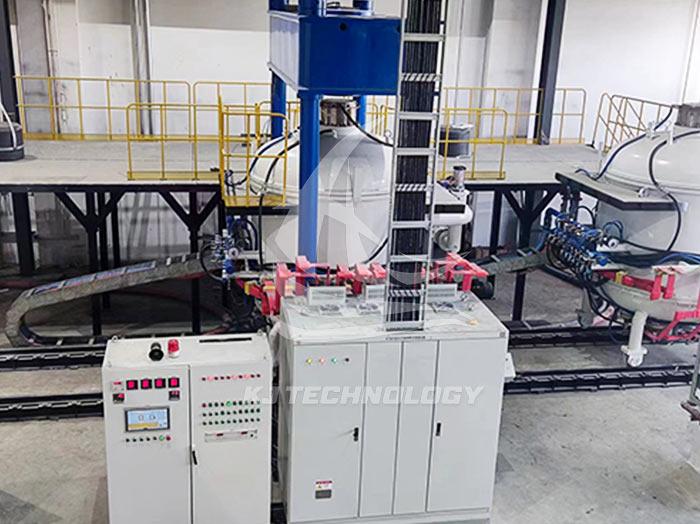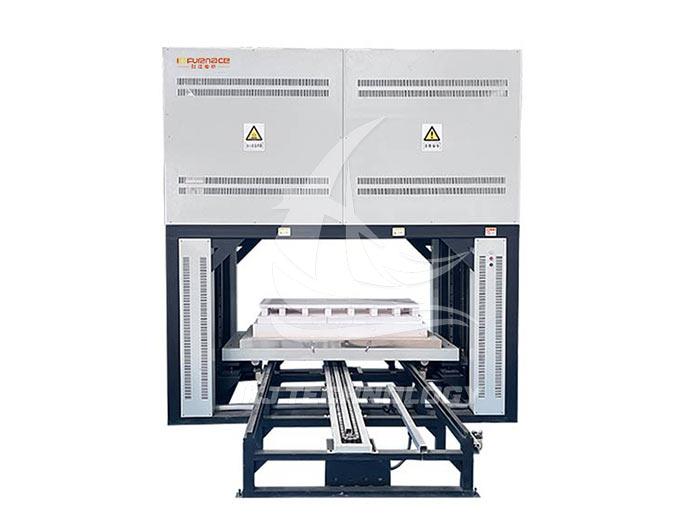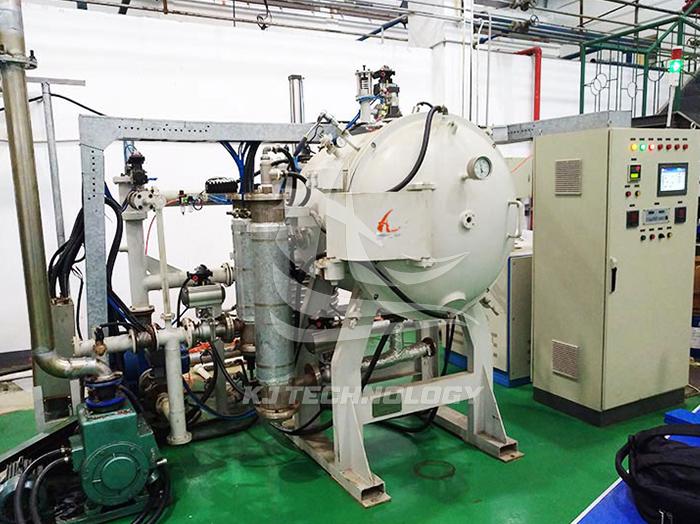Temperature of electric heating vacuum brazing furnace
 09-24-2025 Author: KJ technology
09-24-2025 Author: KJ technology
The temperature control of electric heating vacuum brazing furnace is one of its core performance, which directly affects the welding quality, material applicability, and process stability. The key parameters such as temperature range, control accuracy, and uniformity need to be optimized and designed according to specific application scenarios and material characteristics. The following is a detailed analysis:
1. Temperature range: covering a wide range of needs from low to ultra-high temperatures
The temperature range of electric heating vacuum brazing furnace is usually 200 ℃ to 2200 ℃, and some high-end equipment can be extended to 2500 ℃ to meet the welding needs of different materials and processes:
Low temperature brazing (200 ℃ -600 ℃):
Suitable for soldering electronic components, precision instruments, etc. with soft solder materials such as tin based and lead based solder materials. For example, the vacuum soldering of the phone frame and screen should be controlled at a temperature of around 350 ℃ to avoid thermal damage to sensitive components.
Medium temperature brazing (600 ℃ -1000 ℃):
Suitable for welding structural components such as stainless steel and carbon steel using silver based and copper based brazing materials. For example, the vacuum brazing of the main plate of a car radiator is controlled at a temperature of 850 ℃ -900 ℃ to ensure that the brazing material fully wets the base material.
High temperature brazing (1000 ℃ -1600 ℃):
Suitable for welding key components such as aircraft engine blades and turbine disks using nickel based and cobalt based high-temperature alloy brazing materials.
Ultra high temperature brazing (1600 ℃ -2200 ℃):
Suitable for connecting difficult to weld materials such as ceramic metal and active metals (such as titanium and zirconium). For example, the vacuum brazing temperature of ceramic copper-clad substrates is 1830 ℃, which increases thermal conductivity and meets the requirements of semiconductor packaging.
2. Temperature control accuracy: the "gold standard" for ensuring welding quality
Temperature control accuracy is a core indicator for measuring the performance of vacuum brazing furnaces, which directly affects the density, strength, and reliability of welded joints
Temperature control method:
Using S-type (platinum rhodium 10 platinum) or B-type (platinum rhodium 30 platinum rhodium 6) thermocouples combined with PID (proportional integral derivative) control algorithm to achieve precise temperature regulation. For example, when brazing aircraft engine blades, temperature fluctuations need to be controlled within ± 5 ℃, otherwise it may cause uneven melting of the brazing material or overheating of the base material.
Typical accuracy indicators:
Steady state accuracy: ± 1 ℃ (within the range of ± 10 ℃ at the set temperature)
Heating rate accuracy: ± 5 ℃/min (within the target heating rate range of ± 10%)
Insulation section accuracy: ± 0.5 ℃ (within the set temperature range of ± 5 ℃)
Case verification:
The vacuum brazing furnace produced by a certain enterprise has a temperature control accuracy of ± 1 ℃ when welding titanium alloys, and the fatigue life of welded joints is improved, meeting the strict requirements of spacecraft thermal protection systems.
3. Temperature uniformity: Avoiding the "invisible killer" of local overheating or underheating
Temperature uniformity refers to the degree of deviation between the temperature at each point in the furnace and the set temperature, which directly affects the quality consistency of the welded joint
Influencing factors:
Heating element layout: Graphite heaters, molybdenum heating belts, etc. should be evenly distributed around the furnace to avoid heat concentration.
Workpiece placement method: The distance between the workpiece and the heating element, as well as the spacing between workpieces, need to be optimized to reduce the heat shielding effect.
Vacuum degree: In high vacuum environments, gas convection weakens, and heat conduction mainly relies on radiation. Temperature gradients need to be compensated for by adjusting heating power.
Typical uniformity index:
Effective working area of furnace: temperature deviation ≤ ± 5 ℃ (within the set temperature range of ± 10 ℃)
Surface temperature difference of workpiece: ≤± 3 ℃ (for workpieces with diameter ≤ 300mm)
Case verification:
When a certain automotive parts enterprise uses a vacuum brazing furnace to weld radiators, the temperature uniformity is improved from ± 8 ℃ to ± 3 ℃ by optimizing the layout of heating elements and the placement of workpieces, and the qualification rate of radiator airtightness is improved.
4. Collaborative optimization of temperature control and vacuum degree: achieving the effect of "1+1>2"
Temperature and vacuum degree are the two core parameters of vacuum brazing, which need to be controlled together to achieve the best welding effect:
Low temperature brazing (<600 ℃):
Low vacuum (10 ⁻¹ -10 Pa) can be used to reduce costs, but it is necessary to ensure stable vacuum degree and avoid oxidation caused by gas reverse osmosis.
High temperature brazing (>1000 ℃):
High vacuum (<10 ⁻ ³ Pa) must be used to completely eliminate reactive gases such as oxygen and water vapor, to prevent oxidation of the base material and brazing material. For example, when brazing nickel based high-temperature alloys, the vacuum degree needs to be lower than 5 × 10 ⁻⁴ Pa, otherwise the strength of the welded joint will decrease.
Dynamic vacuum control:
Some high-end devices are equipped with dynamic vacuum adjustment function, which can automatically adjust the vacuum degree according to temperature changes. For example, reducing the vacuum degree during the heating stage to reduce thermal stress, and increasing the vacuum degree during the insulation stage to optimize welding quality.
5. The future trend of temperature control technology: intelligence and adaptability
With the development of Industry 4.0 and intelligent manufacturing, the temperature control technology of vacuum brazing furnaces is evolving towards intelligence and adaptability
AI temperature prediction:
The machine learning algorithm is used to analyze the historical welding data, predict the temperature change trend, and adjust the heating power in advance to achieve "no overshoot" control.
Adaptive PID Control:
Automatically adjust PID parameters based on workpiece material, size, and welding stage to improve the dynamic response speed and steady-state accuracy of temperature control.
Remote monitoring and diagnosis:
Support industrial Internet access, real-time monitoring of temperature, vacuum and other parameters, and predict equipment failure through big data analysis to achieve preventive maintenance.








